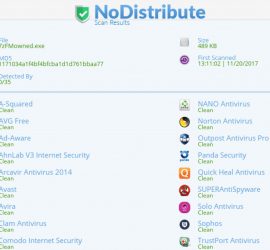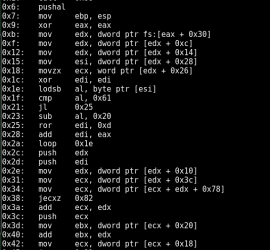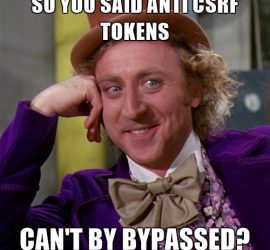Introduction During Penetration testing engagement you are required backdooring PE file with your own shellcode without increasing the size of the executable or altering its intended functionality and hopefully making it undetectable (UD) how would you do it?. For example, after recon, you gather information that a lot number of employees use a certain “program/software”. The social engineering way to get in the victim’s network would be a phishing email to employees with a link to download “Updated version of that program”, which actually is the backdoored binary of the updated program. This post will cover how to backdoor a […]
Yearly Archives: 2017
How many lines of code it takes to convert Hex to Assembly? only FIVE Thanks to Python and Capstone!. During binary analysis, exploit development or reverse engineering you require a quick dissembling of hex shellcode to assembly. You could do that using a dissembler like Ollydbg or IDA Pro, if you don’t want to use a full fledged dissembler to perform this small task the following code will help to convert hex to assembly using simple python script. Firstly if you don’t already have capstone you need to install it using the following:- Debian based Download and install using the following […]
In software development they say “Clients don’t even know what they want, they just want it and want it now!” no wonder they keep showing them prototypes. The case is similar in Information security as well, they just want it “secure”. As a penetration tester when you go out to perform Penetration testing engagement, you must have a clear mind on what the client wants. What are the do’s and don’t? What matters to them the most? Chances are that even if you performed technically sound pentest, they would still not be pleased. Maybe it’s the “first time getting their […]
Introduction Application Threat Modeling using DREAD and STRIDE is an approach for analyzing the security of an application. It is a structured approach that enables you to identify, classify, rate, compare and prioritize the security risks associated with an application. Application Threat modeling should be considered separate from Risk Assessment, although similar but Application Threat Modeling is more of a calculated approach. Inducing Application Threat Modeling into SDLC process has its advantages for the security of the entire project. Most importantly when performing security assessments following the threat modeling approach gives the reviewer a comprehensive overview of the Application. This […]
Recently during a penetration testing assessment I was able to get Linux Privilege Escalation using weak NFS permissions in “/etc/exports”. Initially I got a restricted shell access with limited permissions by exploiting a vulnerable service. Started to recon for privilege escalation to root access but couldn’t get the “usual suspects” (Kernel Exploits, vulnerable services etc). Having no further progress for linux privilege escalation I went back to my pre-limitied shell recon results, its important to mention that penetration testers when they get the initial shell access often don’t look back at recon results and start gathering only the internal information about […]
During web application security assessments, Cross Site Request Forgery is often an underrated vulnerability and often ignored, either due to the fact that it requires some sort of user interaction or lack of severity. Lack of severity part is debatable, it depends on which functionality the CSRF vulnerability exists, for example it would be severe if it exists on a password change functionality, an attack could send a crafted link to victim, victim clicks the link (Actual click is not required, one could use embedded HTML links in a page), attacker rides the victims session and password gets changed of […]






